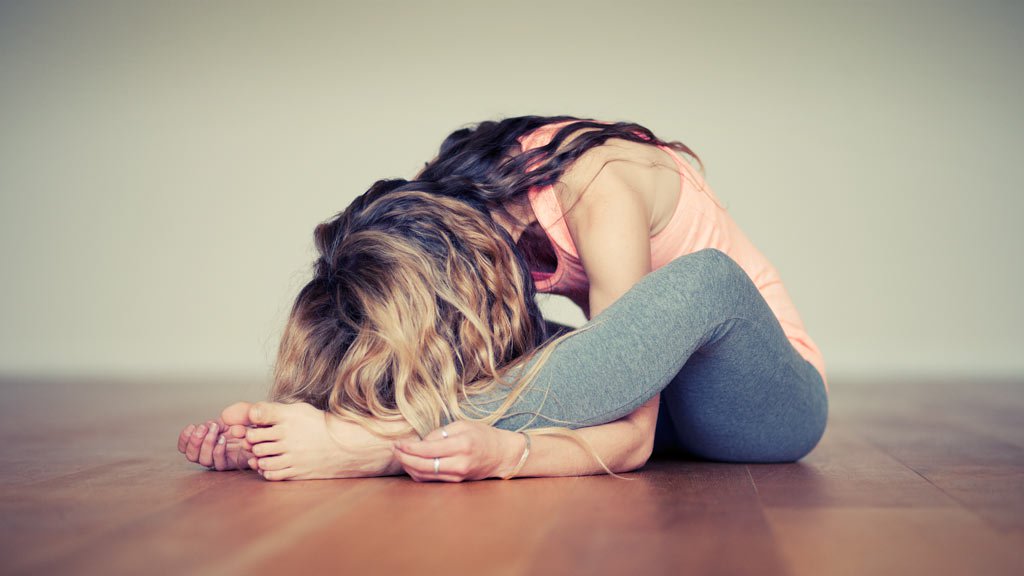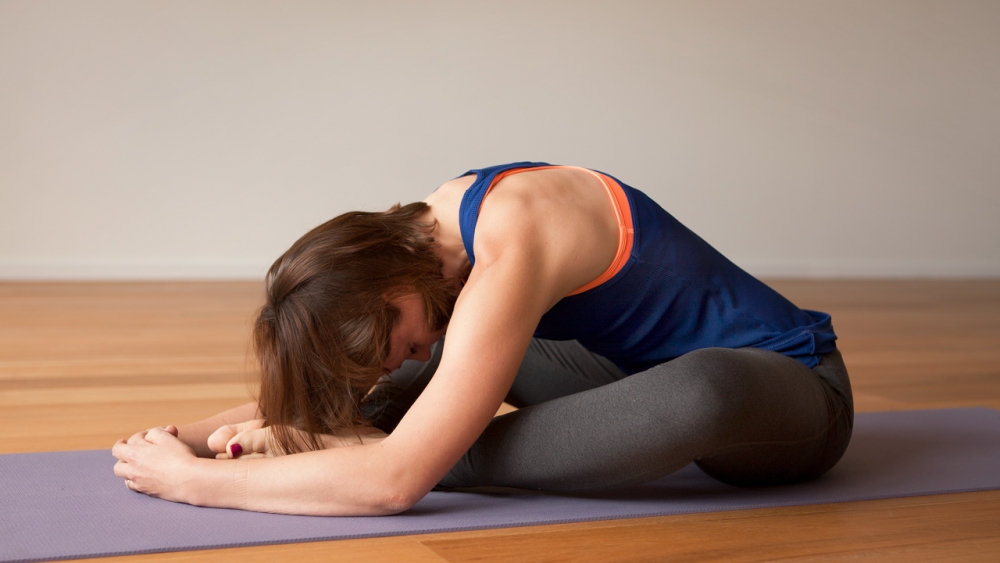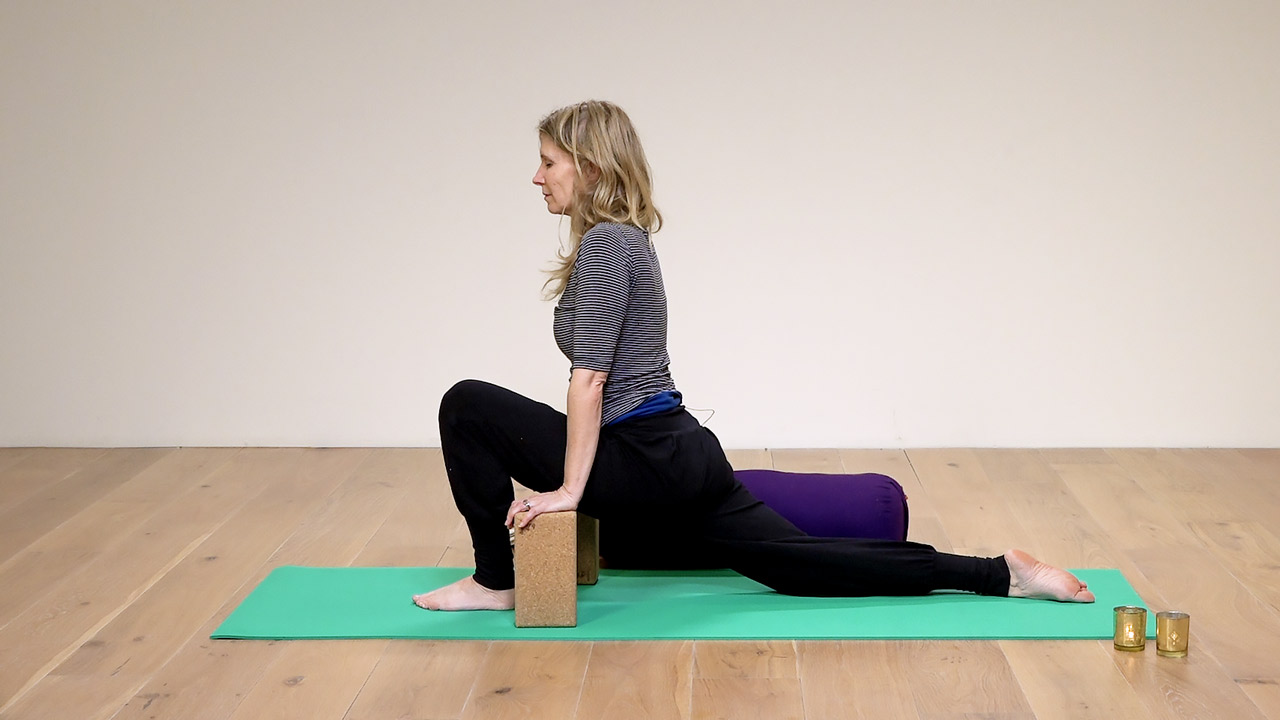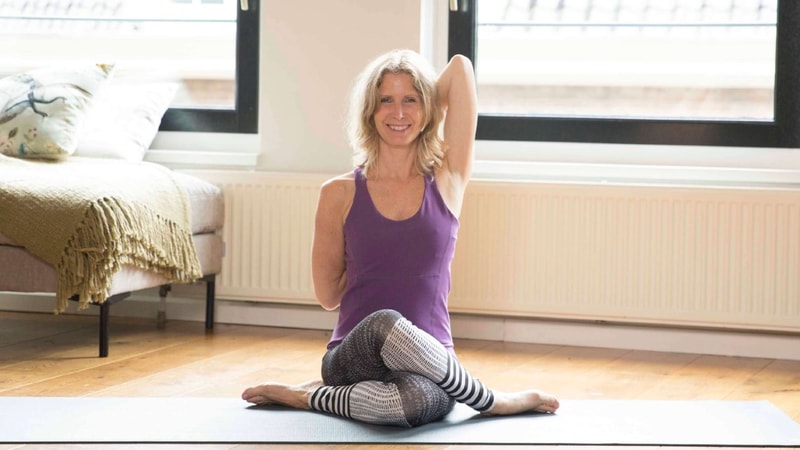My motivation for writing this article is to encourage everyone who hasn’t tried Yin yoga, to try it. Why? Because, in a nutshell, the feeling you’re left with after you have practised Yin yoga is amazing!
Benefits of a regular Yin yoga practice
- Calms and balances the mind and body
- Reduces stress and anxiety
- Increases circulation
- Improves flexibility
- Releases fascia and improves joint mobility
- Balances the internal organs and improves the flow of chi or prana
Try it out!
Try my class, Yoga for a great mood – Yin style which includes poses that give you a positive physiological shift in your feeling state and energy.
What is Yin yoga?
While Yang yoga practices (Ashtanga, Vinyasa) physically target the ‘superficial’ muscles, in Yin yoga, we target the deep connective tissues of the body – the ligaments, joints, bones, and deep fascia networks. A Yin class usually consists of a series of passive floor poses held for up to 5 minutes or more. These poses mainly work the lower part of the body – the hips, pelvis, inner thighs, lower spine. These areas are especially rich in connective tissues.
On an energetic level, Yin yoga improves energy flow and enhances the flow of chi in the organs. However, the practice also offers huge mental and emotional benefits too, as we’ll find out.
- Read more about the history and origins of Yin Yoga
Who is Yin yoga for?
Yin yoga is for you if you are tired and craving energy or you’re over-stimulated and have too much energy.
Our world bombards us with stimuli, 24/7, keeping our minds constantly busy with processing all the information that’s thrown at it. Whether the information is valuable or rubbish, it doesn’t matter; the mind still needs to deal with it. Eventually, we get used to that level of stimulus and start to crave it if things become quiet. So we end up browsing, looking for stuff; it doesn’t matter what, as long as we fill the gaps.
Any form of dynamic yoga caters to this aspect of keeping ourselves busy. Although the mind may calm down as a result of active exercise, we’re still feeding the part of us that craves intensity and wants to be stimulated. We just happen to have found ourselves a healthier stimulus! I’m not encouraging you to cut out the dynamic yoga, just try to balance all the on-the-go aspects of life. A great way to do that is by practising Yin yoga.
Yin yoga and the body
Yin yoga works on the yin tissues – also known as the connective tissues. Connective tissue responds best to a slow, steady load, which is why we hold the poses for longer. If you gently stretch connective tissue by holding a yin pose for a long time in this way, the body will respond by making it a little longer and stronger – which is exactly what you want.
Different Yin yoga poses stimulate and remove blockages in the myofascial meridians in the body, which in turn balances the body’s internal organs and systems. Yin yoga requires the muscles to relax around the connective tissue in order to get a stretch, so not every yoga pose can be done safely or effectively when practising Yin style yoga. Thus Yin asanas have different names.

For example, Baddha Konasana (Bound Angle pose) in a Yang yoga class involves lengthening the spine, stretching the muscles of the back and engaging the muscles of the legs and abdomen to fold the torso towards the legs. However, in the Yin style version which is known as Butterfly (pictured), the muscles are relaxed and the spine naturally rounds so that the head comes towards the knees, rather than the feet, as the body releases.
- Learn more about different Yin Yoga Poses in our yoga pose gallery – with step-by-step instructions, beginners’ tips, variations and suggested classes
Yin yoga and the mind
Becoming still in a pose and staying for a while creates those gaps that I referred to earlier. Keeping the gaps empty creates space for anything that wants to come up. This could be anxiety, happiness sadness, boredom…any emotion or feeling you suppress with all busyness in your life. Yin yoga gives you the time and space to allow emotions, thoughts and feelings you have kept in the shadows, to surface.
Generally speaking, during a Yin yoga class, you will be encouraged to allow all those feelings to be there, but not to identify with them. To observe but not get caught up in them. It costs the body a lot of energy to keep things suppressed, so the release you feel from letting it all come out can be just as big.
You learn to observe only the pure physical sensations of emotions, without getting caught up in the stories about those emotions.
These stories are usually related to why we feel such and such, whose fault it is etc. Just observing the physical sensations, without giving ‘juice’ to the stories, allows those emotions and physical sensations a way out of your system. This helps to clear the mind of these often unconscious emotions, and thus gives your system an opportunity to work through the blockages those emotions have caused in the body. What a wonderful and much-needed release!
Tips for practising Yin yoga
- Find your appropriate edge: Move slowly and gently into the pose. Don’t go straight to your “maximum” in the pose and never stretch so far as to cause pain.
- Stillness: consciously try to release into the pose, and to remain still, without fidgeting or shifting position too much.
- Hold the position: start with holding a pose for 1-3 minutes and progress to 5 minutes or more.
Declutter your mind with our Yin Yoga program
6 Yin yoga classes to organise your energy system through different focus points, bringing your mind, body and energy back into balance, and improving your concentration and focus.
….or take a look at our hundreds of Yin yoga classes, with different teachers and varying lengths.
With love,
Esther
n.b. This is an updated article, which was originally published in 2014.



